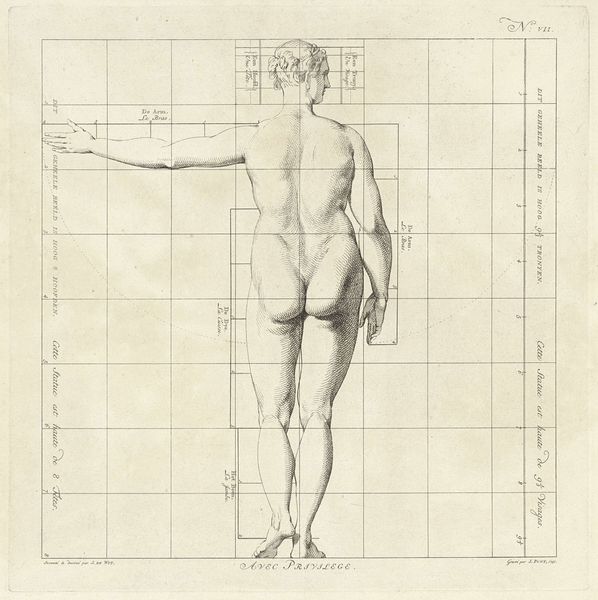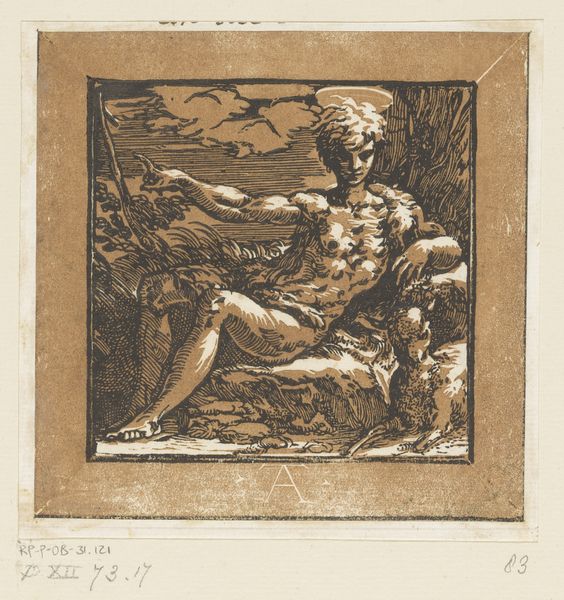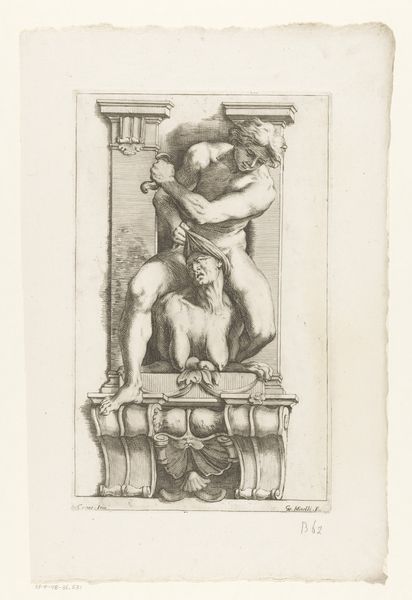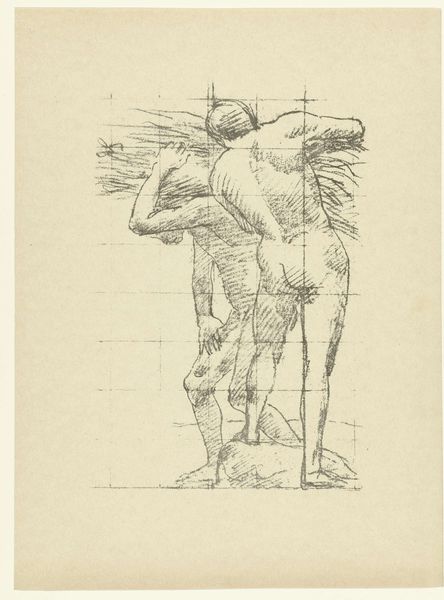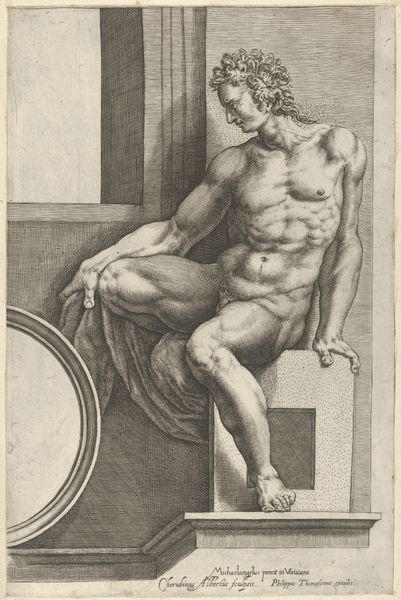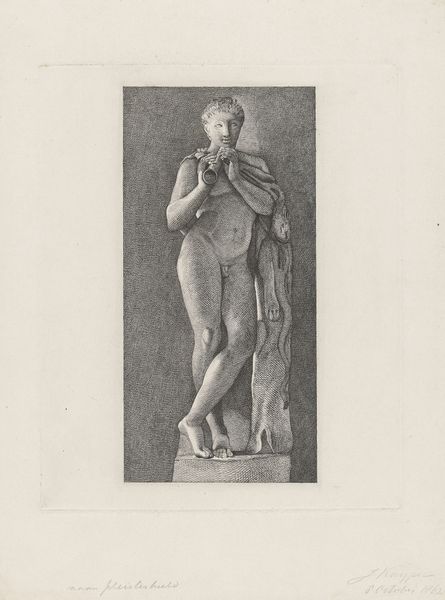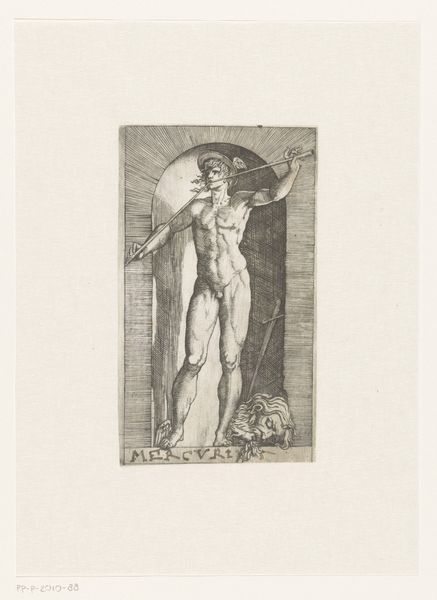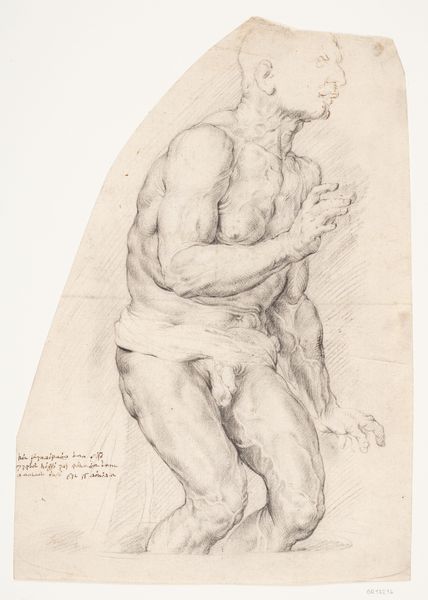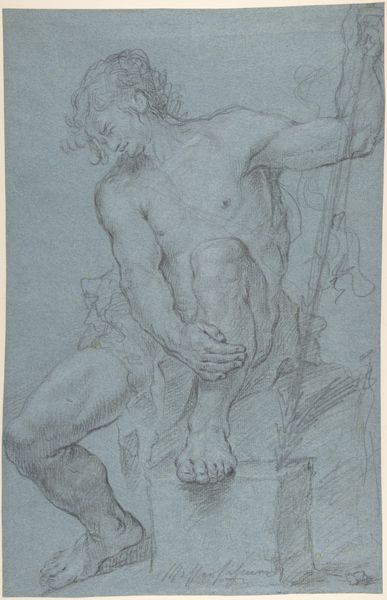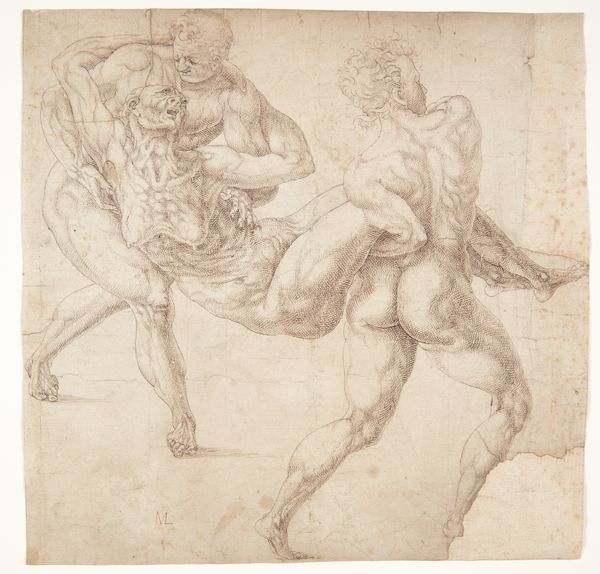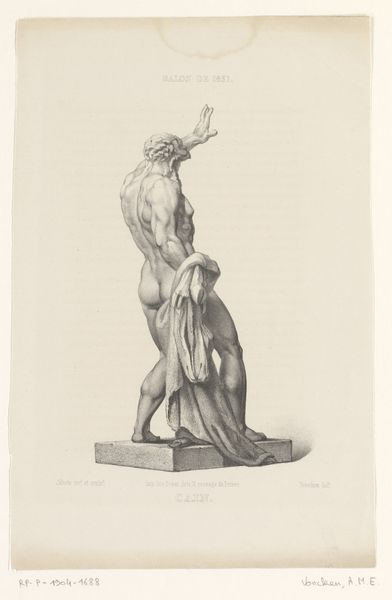
drawing, paper, graphite, engraving
drawing
classical-realism
figuration
paper
form
line
graphite
history-painting
academic-art
nude
engraving
Dimensions: height 376 mm, width 371 mm
Copyright: Rijks Museum: Open Domain
Editor: This is Jan Punt’s “Proportiestudie van het lichaam van Hercules Farnese,” made around 1747. It's a drawing and engraving on paper, and what strikes me first is the figure's incredible muscularity combined with the strict grid imposed over it. It feels like a study of the ideal form, but also constrained by it. What do you see in this piece? Curator: Beyond the obvious display of classical ideals, I'm drawn to how this image attempts to capture and codify Hercules. Notice the grid—a symbol of rationalism attempting to contain the raw, untamed power of a mythic figure. The question then becomes, can you truly capture a cultural icon within such a rigid framework, or does something essential always escape? Think about Hercules: what does he represent to you? Editor: Well, strength, definitely. And maybe a certain untamed, heroic masculinity? Curator: Precisely! And this image tries to quantify that. The overlaid text—snippets of measurement in old Dutch and French—underscores that ambition. What does it say about the relationship between art, science, and cultural memory, when we try to dissect and categorize our heroes? Does it honor or diminish them? Editor: That's a really interesting point. I hadn't thought about how trying to measure the 'ideal' can also feel like… reduction. I wonder if Punt was even aware of this tension? Curator: It's impossible to say definitively, but the very existence of this "Proportiestudie" suggests a deep engagement with these questions, with how we grapple with legacies. Images always carry more than meets the eye, becoming vessels for our hopes, fears, and collective memories. Editor: I definitely see that now; it's much more than just a drawing of a muscular guy! It’s a study in how we study our own heroes.
Comments
No comments
Be the first to comment and join the conversation on the ultimate creative platform.

